Unless you've visited Amish country recently, you may have thought pickled eggs are a thing of the past. Not so! Amish Pickled Red Beet Eggs are a great snack, an easy breakfast on the go, and they're delicious on a salad.
★ Why You'll Love this Recipe ★
Hard-boiled eggs are pickled in a tasty brine featuring sliced or whole beets and fresh dill.
These yummy eggs do not require any canning skills. They are pickled in the refrigerator using a sealed mason jar that you can simply hand-tighten.
These pickled red eggs can be eaten straight out of the jar or turned into deviled eggs, creating a beautiful and yummy appetizer.
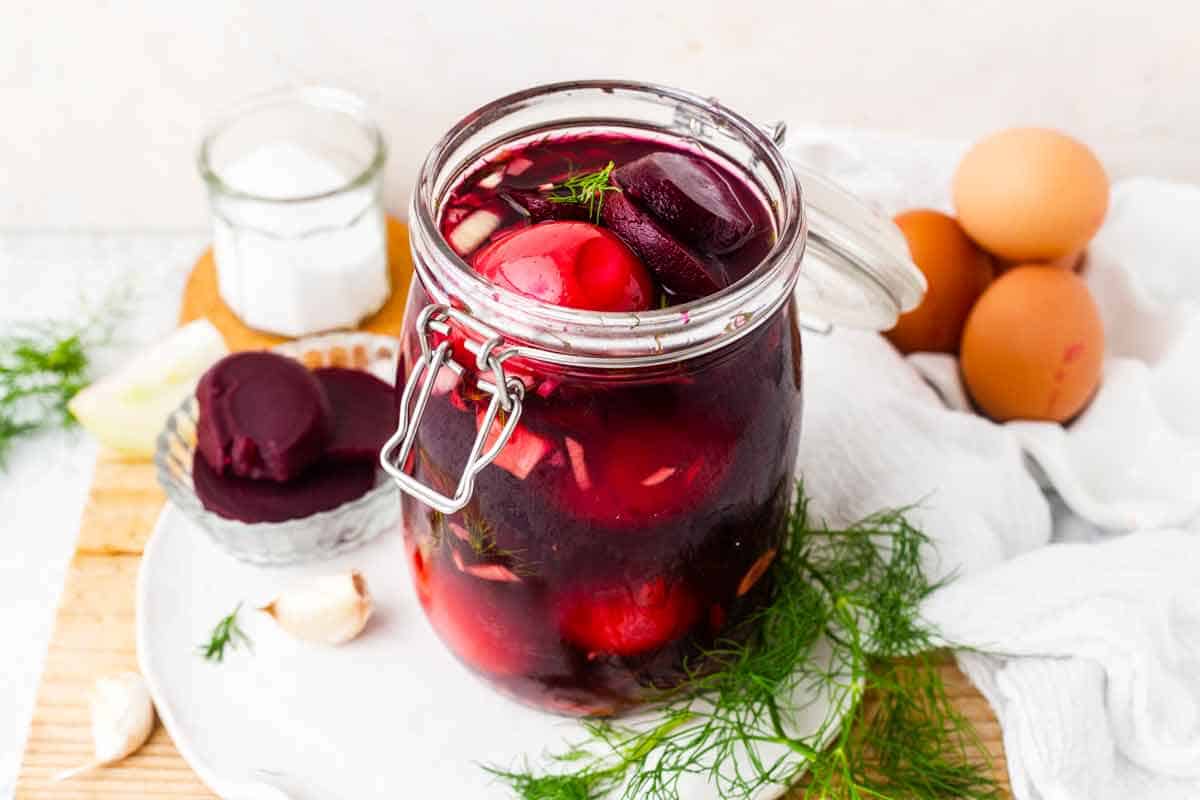
★ Ingredients You'll Need★
To infuse some really great flavor into these eggs as well preserve and marinate them, you need a mixture of ingredients.
Don't worry. There's nothing too hard to find and you can shortcut this recipe by starting with canned beets.
You'll need just a handful of ingredients to make these Pennsylvania-Dutch style pickled red beet eggs.
Here's everything you need:
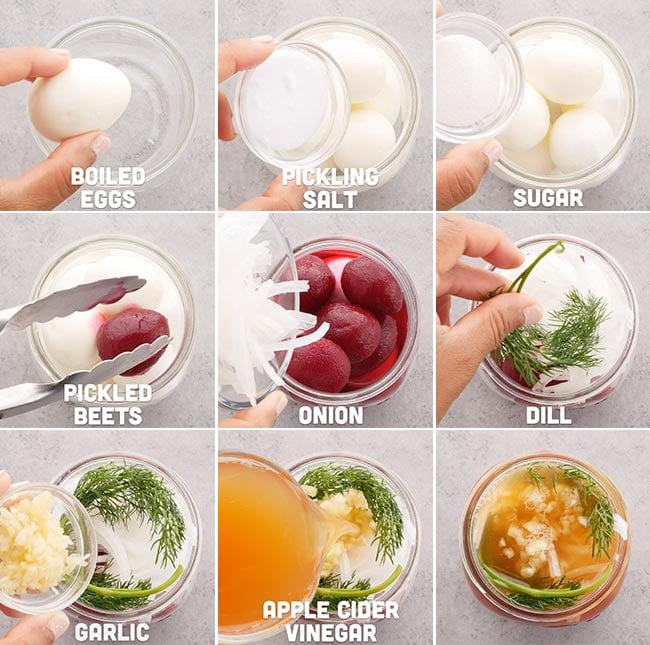
- Hard boiled eggs. See below for how to cook easy-to-peel, perfectly cooked eggs. I prefer corn-fed, hen-laid eggs for the best flavor.
- Pickling salt. This special salt prevents cloudy water.
- Sugar. Regular table sugar works or you can use honey.
- Canned beets. This is a shortcut. You can also just use fresh beets, you'll just need to peel and slice them.
- Onion. White or red onion tastes best.
- Fresh dill. You'll want to go fresh and not dried with this herb for best results.
- Garlic. Minced garlic works really well. You can also use fresh or garlic paste. I do not recommend powder as it may make your brine cloudy and grainy.
- Apple cider vinegar. You can also use red wine vinegar or plain white vinegar however this does give you a different flavor.
★ How to Make this Recipe★
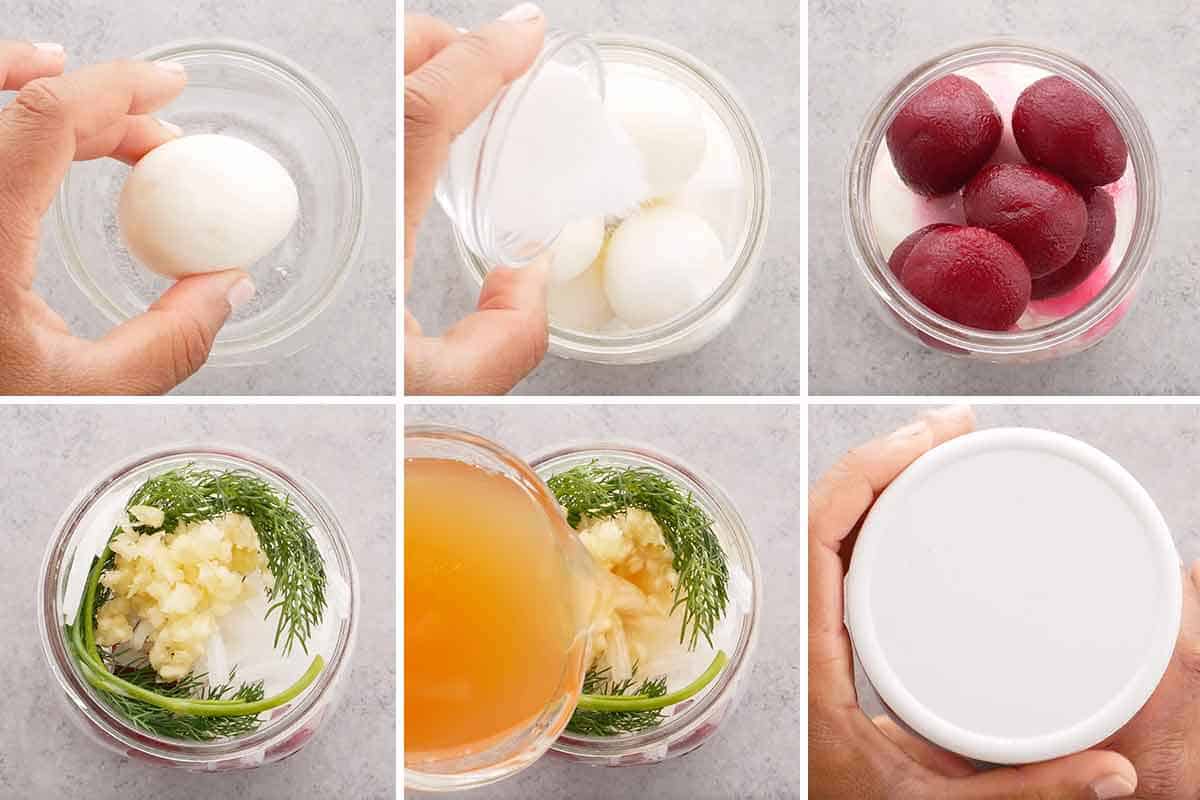
This process is pretty simple. Here are the basic steps:
(Full recipe with ingredient quantities below).
- Hard boil and peel eggs.
- Add eggs to mason jar.
- Layer whole or sliced beets. (Add a splash of beet juice).
- Layer garlic, fresh dill and onions.
- Top off with vinegar.
- Seal with original metal lid or use plastic mason jar lid to avoid rust.
- Let marinate in the refrigerator for at least 24 hours.
Simple as that! The longer you let these marinate, the more the delicious brine will soak into the eggs and add flavor.
★ Tips & FAQs★
Pickling adds flavor and preserves.
Pickling is a great way to preserve things since pickled foods last much longer thanks to the natural preservatives used to do the pickling. Namely vinegar, salt and sometimes sugar.
What are the basic ingredients for pickling?
Vinegar, salt and sugar are the basis for pickling. Then you can add additional ingredients to add flavor.
Fresh herbs, spices, aromatics (like onions) and combinations of vegetables and fruits are all things you can experiment with.
This recipe is a great starting point for learn the basics of pickling but feel free to experiment using different types of vinegar, herbs or spices!
Pickling is not the same as canning.
Similar, yes. But not the same.
I personally don't do any of that fancy canning stuff that involves sterilizing, boiling and other things that require additional effort. Refrigerator pickling is the way to do it, r-e-a-l lazy style.
You literally just have to put things into a Mason jar, put the jar in the fridge and wait. The longer you wait, the more flavorful the food, eggs in this case, but you can eat them as soon as the next day or even within a few hours if you're really anxious.
Check out my recipe for refrigerator pickles if this type of lazy "canning" is your style too!
Supplies you'll need to make pickled eggs
You will need a few special things for this recipe: a quart-sized, wide-mouth Mason jar and this is optional but I prefer the plastic caps since the metal ones get rusty after awhile. Also key is pickling salt. After a little research, I discovered that the iodine in regular table salt can affect the flavor and can cause cloudiness.
These are refrigerator pickled eggs. No canning involved.
This recipe is for refrigerated pickled eggs. I don't do any long-term, sealed, sterilized canning at this point. Too much trouble. But if you’re into that, I guess you could use this same recipe and take that extra step. Then you could even wrap them up for your next gift exchange!
This is a shortcut recipe using canned beets.
Since my recipes are geared toward busy people and families, I try to incorporate at least one short cut in all my recipes. This recipe's short cut is using canned pickled beets. However, you can use fresh beets. All you have to do is peel, slice and boil your beets in enough water to just cover them for 15 minutes or until they're soft. Then use those beets and the beet water as your starting point. We grew beets in our garden this year and used this method. It worked great! However, if you don't have access to fresh beets or have the time to process them, then a can of pickled beets will work just fine.
Storage & Pickling Time
The pickled eggs can be store in the fridge in an air-tight container for up to 3 months. They can last even longer without spoiling but I've found that after awhile the vinegar deteriorates the eggs, lessening the quality.
The sweet spot for enjoying these pickled eggs is after 1 week. Letting the eggs sit in the juice so that the egg whites soak in all the beet juice takes about 1 week.
However, the beets can be eaten after just an hour or so if you're in a hurry!
★ More Recipes You'll Love ★
Love pickled eggs?
If you love pickled eggs, check out these Amish-style Yellow Pickled Eggs.
If you like these pickled eggs and beets, then you might want to also try my Yellow Mustard Pickled Eggs. and my easy Refrigerator Pickles.
You can also browse all my recipes too while you're here and be sure to Pin your favorites to try later!
This Amish Pickled Red Beet Eggs recipe was featured on South Your Mouth!
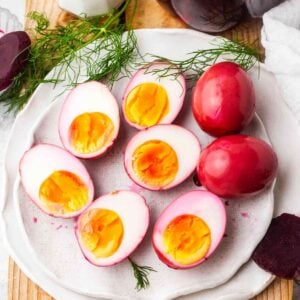
Amish Pickled Red Beet Eggs
Ingredients
- 6 large hard-boiled eggs peeled
- 2 teaspoon pickling salt
- 2 teaspoon sugar
- 10 oz pickled beets with juice
- ¼ onion thinly sliced
- 4 sprigs fresh dill
- 2 teaspoon heaping minced garlic
- 1 cup apple cider vinegar
Mighty Mrs. is a #WalmartPartner.
Instructions
- Add peeled eggs, salt, sugar, beets with juice, onion, fresh dill and garlic to a quart sized mason jar.
- Fill to top with apple cider vinegar (about 1 cup).
- Seal the jar by just hand tightening the lid then very gently shake to distribute the ingredients.
- Place jar in the fridge for at least 24 - 48 hours to allow flavors to absorb into the eggs. That's it! Your pickled eggs and beets are then ready to enjoy!
Video
Notes
Recommended equipment listed may contain affiliate links.

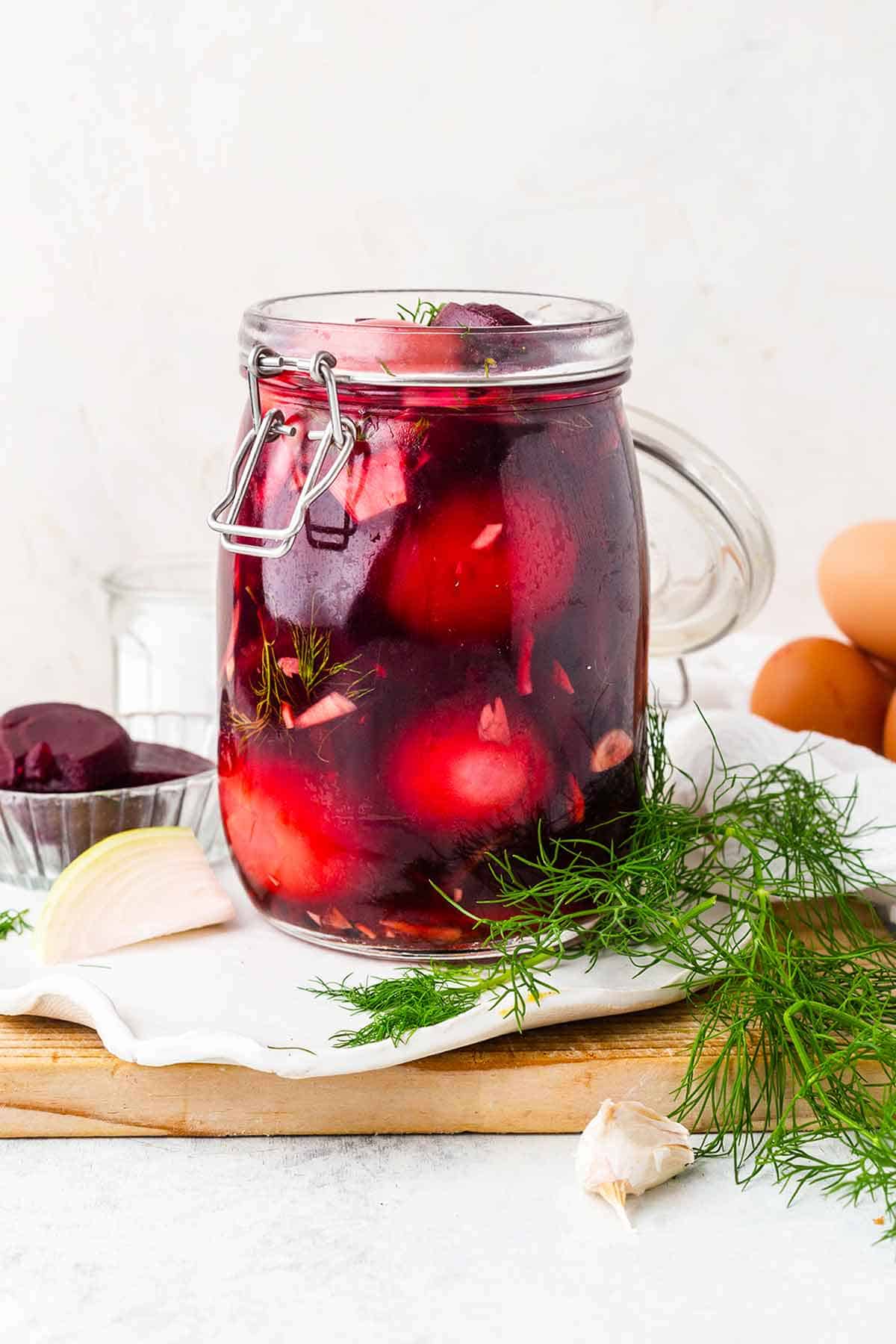
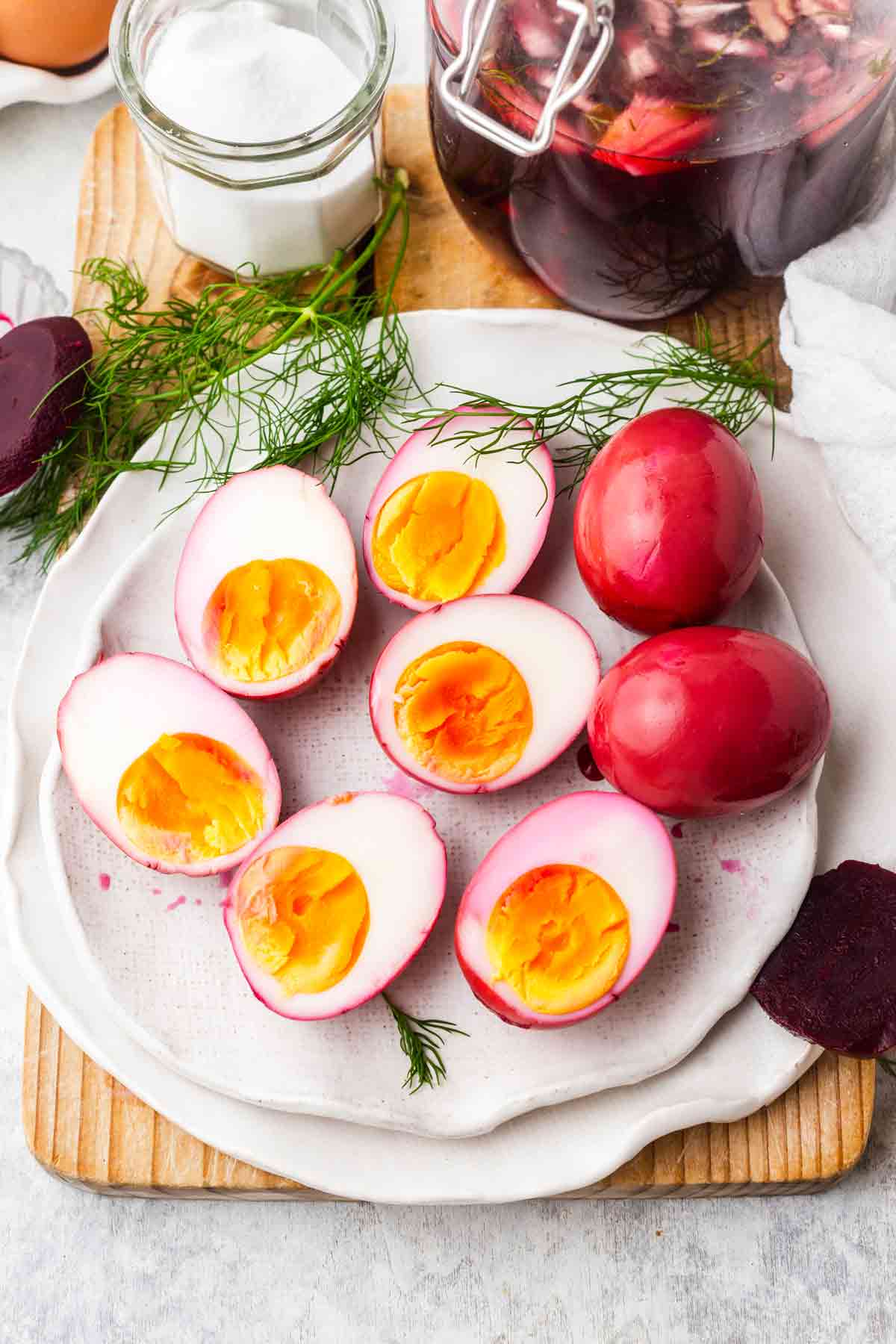
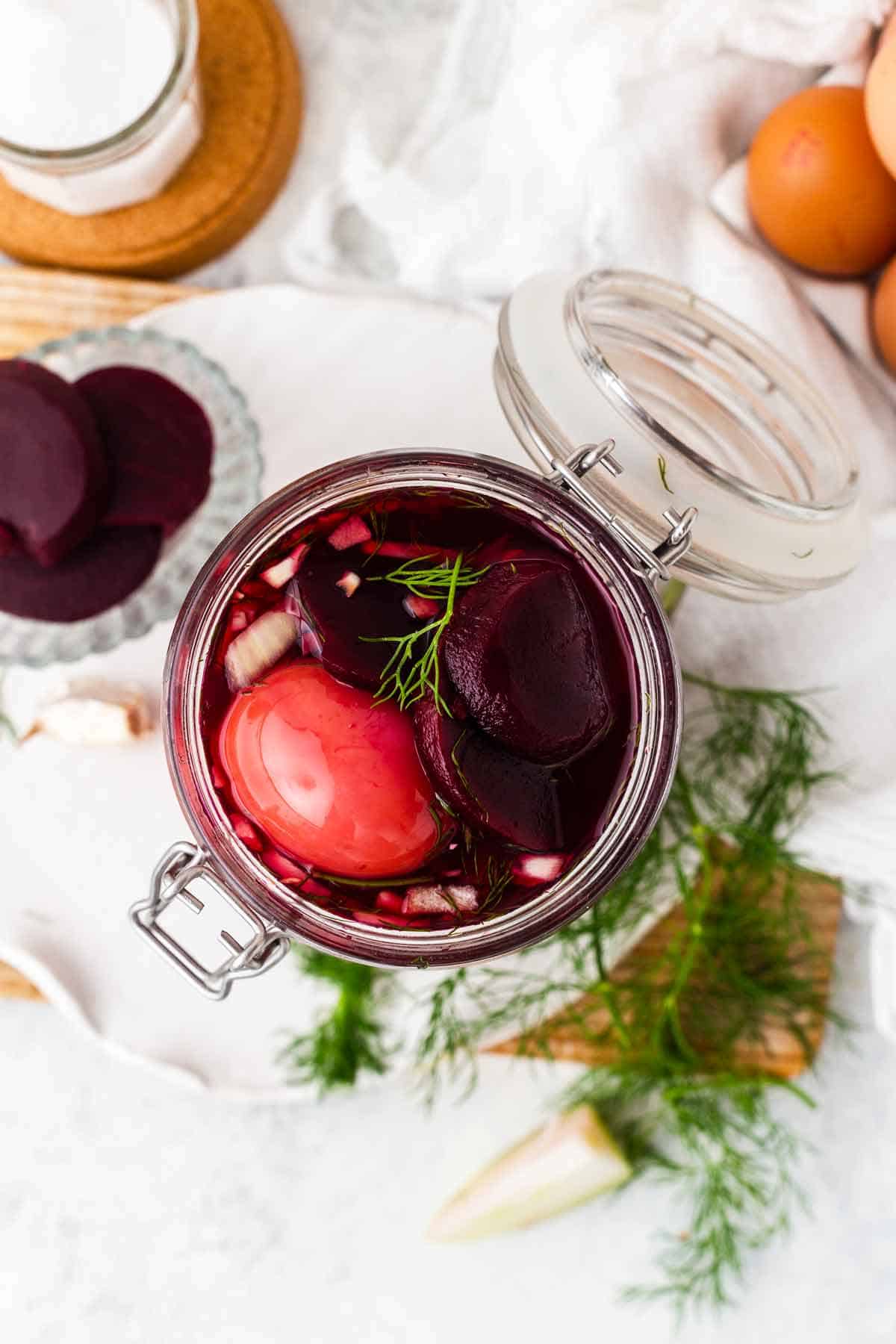
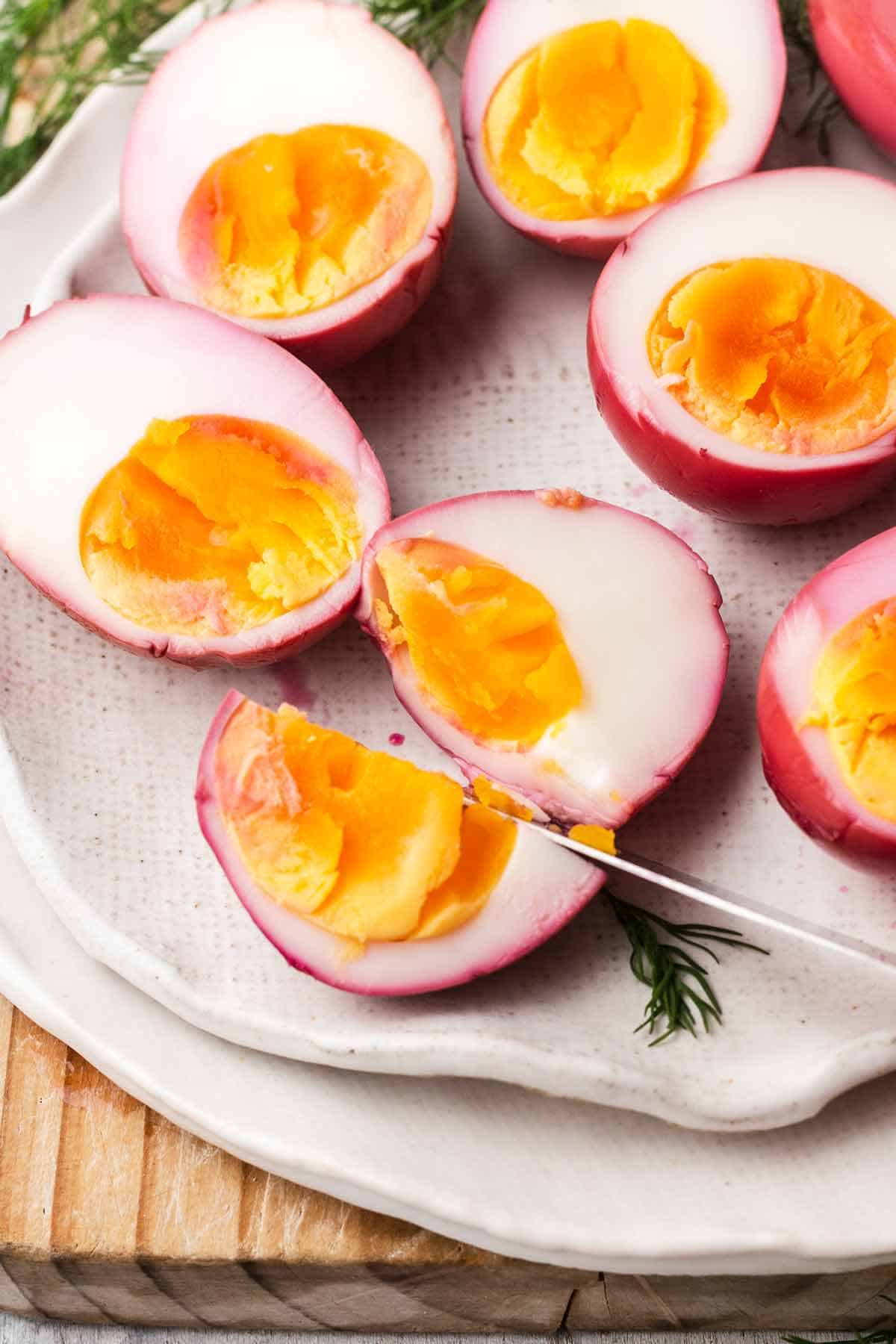
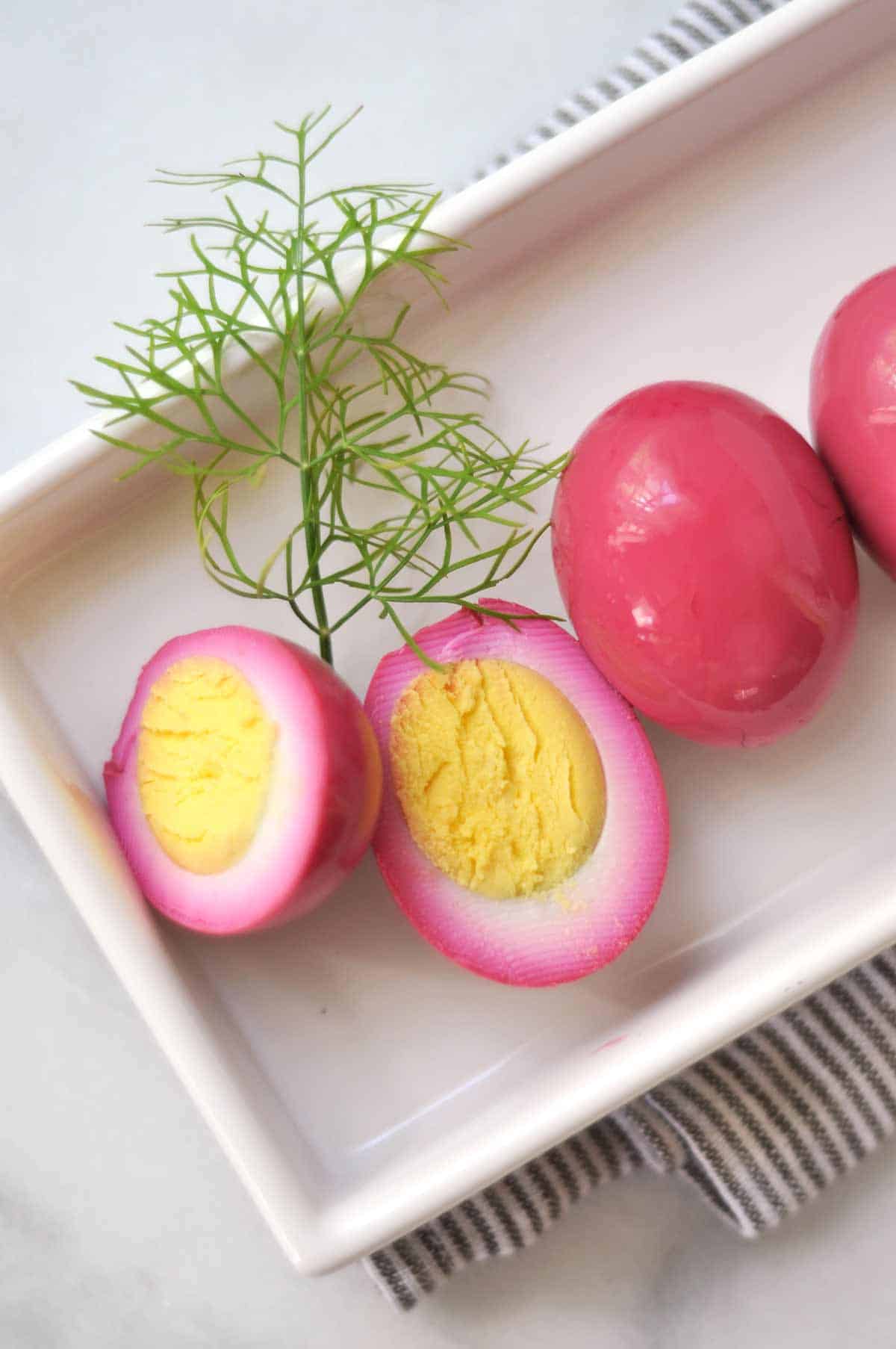
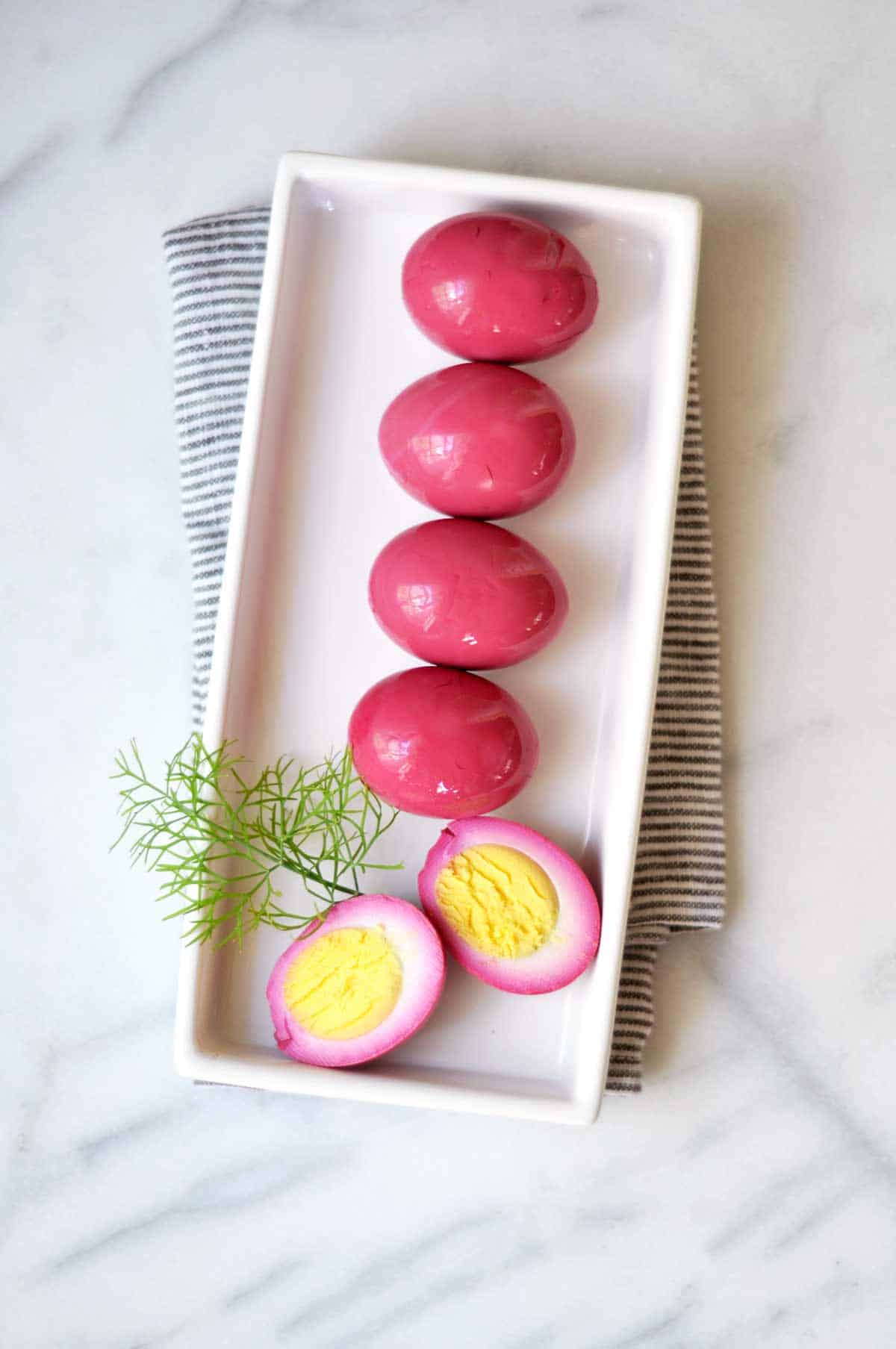
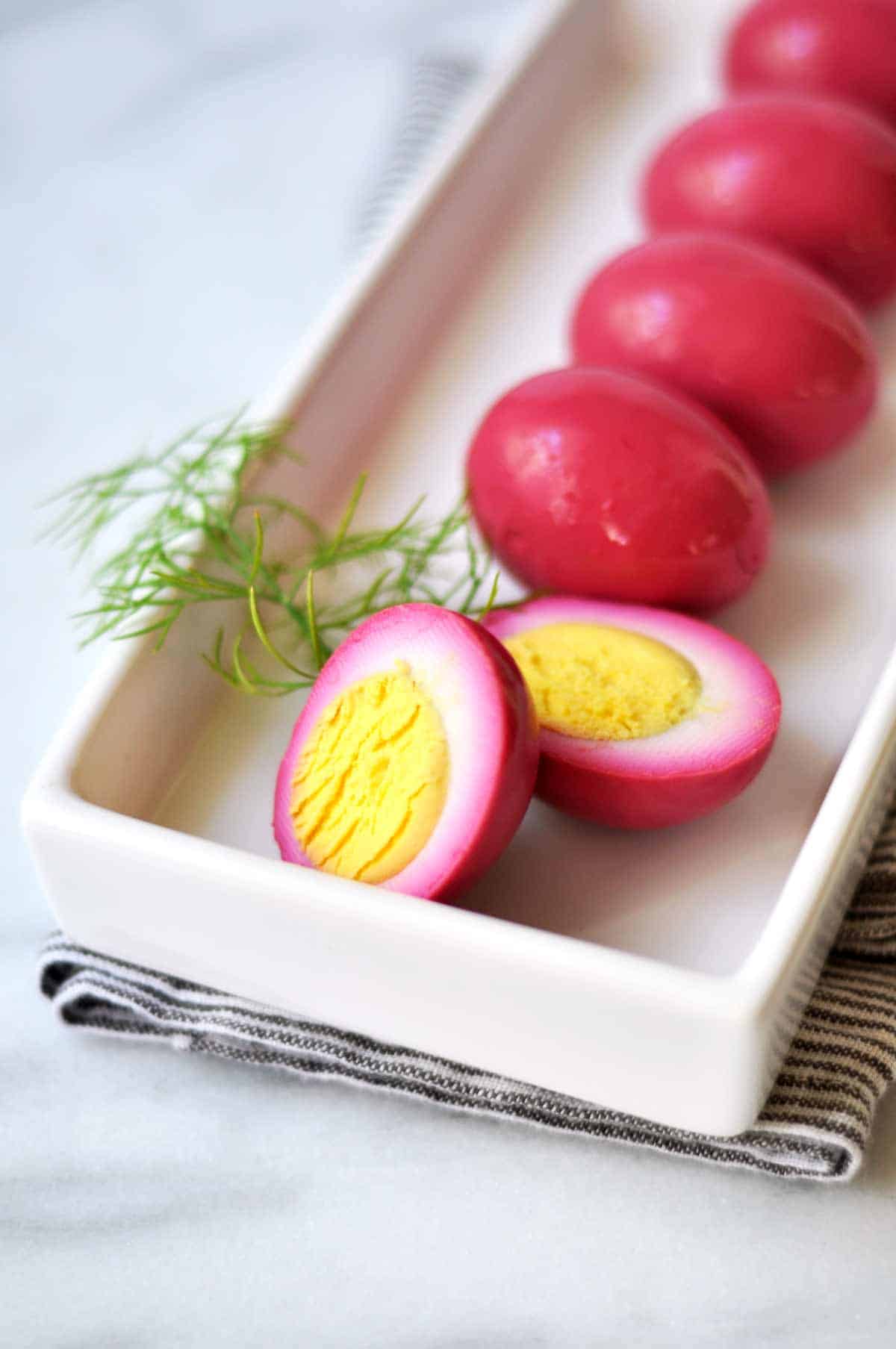
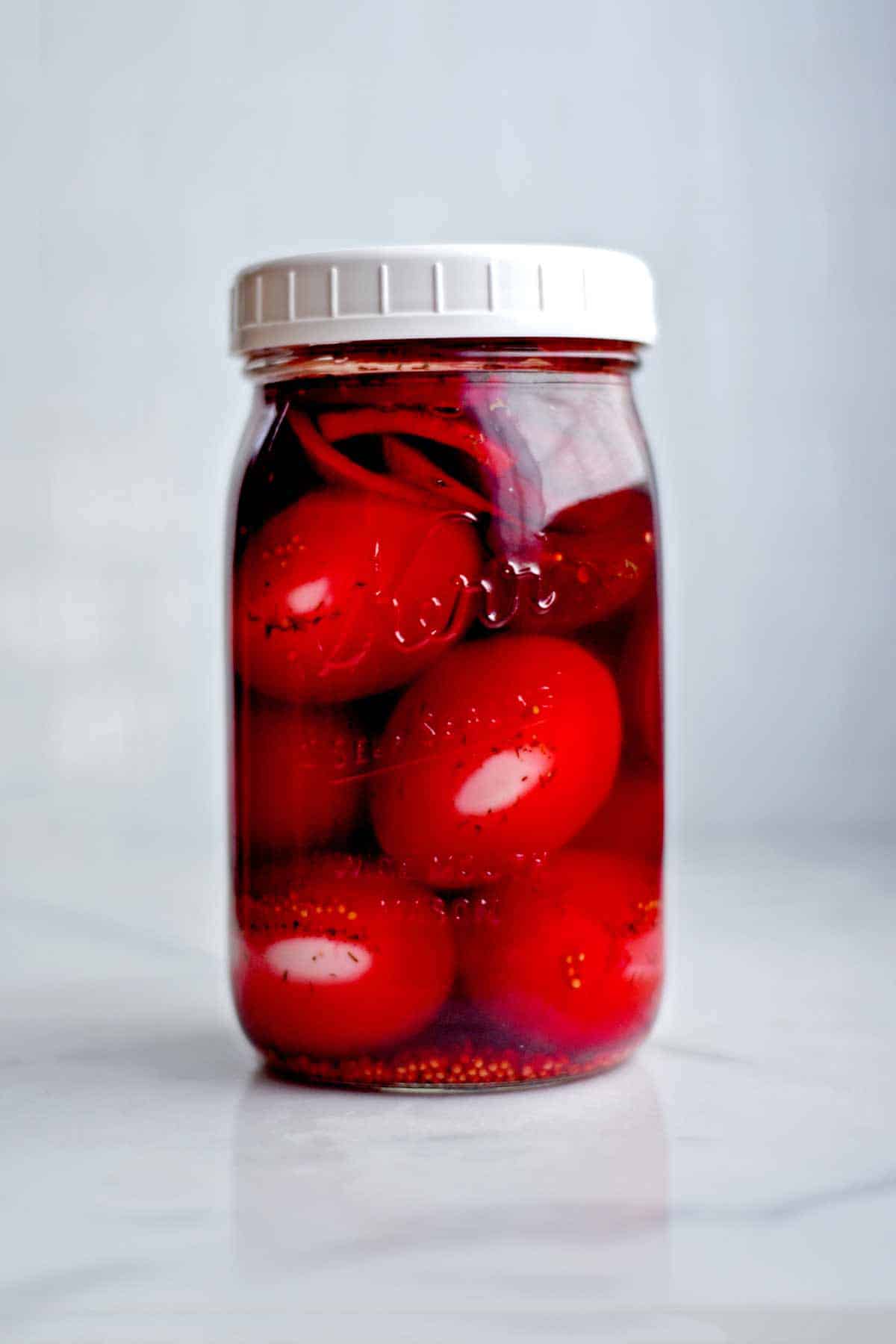
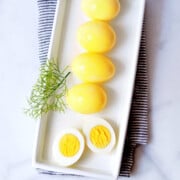
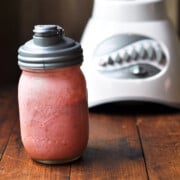
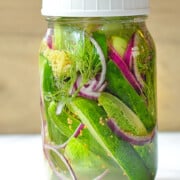
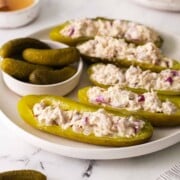
Deborah says
Interested to try this. Can you omit the onions?
Angela G. says
Yes you can, however that changes the flavor.
Milissa says
Hello. I was wondering can you use white vinegar instead of the apple cider vinegar?
Angela G. says
Yes you can. The flavor will just be a little bit different.
Kate says
My question is, how long are they good for in the refrigerator? In other words what is their life span after pickling?
Angela G. says
Hi Kate, good question. According to the Nation Center for Home Food Preservation, pickled eggs last up to 4 months in the fridge. Source: https://nchfp.uga.edu/how/can_06/pickled_eggs.html
Anne says
My mom's family is Pa dutch... this is a great recipe! The only thing I would say, would be to leave the eggs sit in the liquid for a bit longer so that the whole whites of the eggs are solid beet color, not like these where they fade before the yolk. Also, these are not just Amish, but Pa Dutch which are the Pa Germans who aren't Amish as well (like Lutheran, etc)
Angela G. says
Hi Anne, I'm glad you like the recipe! I agree, the longer these eggs sit in the pickling juices, the better they get as they absorb more of the flavor. It can take 6-8 weeks to fully absorb the color and also flavors all the way to the yolk.